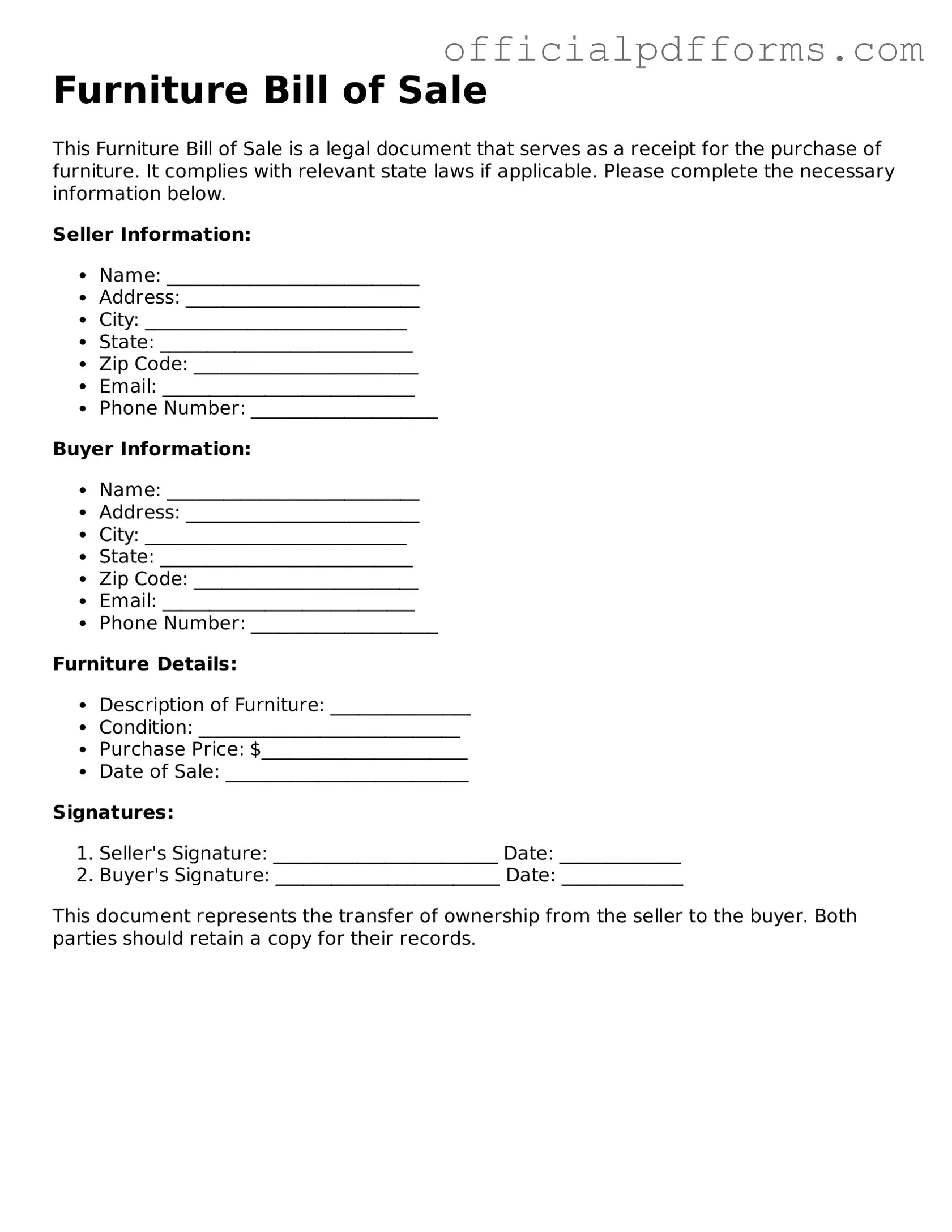What is a Furniture Bill of Sale?
A Furniture Bill of Sale is a legal document that records the sale of furniture from a seller to a buyer. It serves as proof of the transaction and includes details such as the description of the furniture, the sale price, and the date of the sale. This document is important for both parties to ensure clarity and protect their rights.
Why is a Furniture Bill of Sale important?
This document provides a written record of the transaction, which can be essential for various reasons. It helps to establish ownership, serves as evidence in case of disputes, and can be useful for tax purposes. Additionally, it may be required if the buyer wishes to insure the furniture or if they need to prove ownership in the future.
A comprehensive Furniture Bill of Sale should include the following information:
-
The names and addresses of both the seller and the buyer.
-
A detailed description of the furniture being sold, including brand, model, condition, and any distinguishing features.
-
The sale price of the furniture.
-
The date of the transaction.
-
Any warranties or guarantees provided by the seller.
-
Signatures of both parties to validate the agreement.
Is a Furniture Bill of Sale legally binding?
Yes, a Furniture Bill of Sale is considered a legally binding contract once both parties sign it. This means that both the seller and the buyer are obligated to uphold the terms outlined in the document. If either party fails to comply, the other party may have legal recourse to enforce the agreement.
Can a Furniture Bill of Sale be used for second-hand furniture?
Absolutely. A Furniture Bill of Sale is commonly used for both new and second-hand furniture sales. It is especially important for second-hand transactions, as it helps clarify the condition of the items being sold and protects both parties from potential misunderstandings.
Do I need a notary for a Furniture Bill of Sale?
In most cases, a notary is not required for a Furniture Bill of Sale. However, having the document notarized can add an extra layer of legitimacy and may be beneficial in case of disputes. It is advisable to check local laws or regulations to determine if notarization is necessary in your area.
Furniture Bill of Sale forms can be obtained from various sources. Many legal websites offer downloadable templates, and some office supply stores may carry them. Additionally, you can create your own form by including the necessary information outlined earlier.
What should I do after completing the Furniture Bill of Sale?
After completing the Furniture Bill of Sale, both the seller and the buyer should keep a copy for their records. This will serve as proof of the transaction and can be referenced in the future if needed. It is also wise to ensure that the furniture is delivered or picked up in accordance with the terms agreed upon in the document.
Can I cancel a Furniture Bill of Sale?
Once signed, a Furniture Bill of Sale is generally considered final. However, if both parties agree, they may cancel the sale and nullify the bill. This should be documented in writing to avoid any future disputes. If there are issues such as fraud or misrepresentation, legal advice may be necessary to address the situation.
